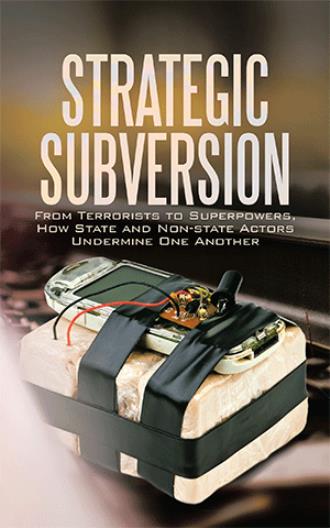Soviet development of a communist government in Afghanistan in 1978 set the stage for US subversion of that government and Soviet influence. The Soviet Union enabled the development of a communist party in Afghanistan, the People’s Democratic Party of Afghanistan (PDPA). This work paid off with Afghanistan’s April 1978 Saur Revolution which put the communist, pro-Soviet PDPA in power in Kabul. In February 1979, alongside Iran’s seizure of the American embassy in Tehran, a small Marxist-Shia group kidnapped the American ambassador to Afghanistan, Adolph Dubs. Months later, in a coup de grâce to US influence in Kabul, Soviet-advised Afghan security forces killed Ambassador Dubs during a raid under suspicious circumstances. Much circumstantial evidence indicates at least Soviet complicity in Dubs’s death. Communist movements were not the only incipient political movement developing in Afghanistan during this period. A religious political movement also emerged. As soon as the communists took power, the religious resistance began—a Soviet vulnerability the US would exploit.
This case study explores the US strategy to support the Mujahedeen by using primary sources compared against previous studies. Primary sources include interviews with US strategists involved in the campaign as well as official documents, such as declassified presidential findings and intelligence analyses. Previous studies of the campaign include historical research and memoirs of officials from the era, such as Steve Coll’s Ghost Wars, George Crile’s Charlie Wilson’s War, Milt Bearden’s The Main Enemy, and Ambassador Peter Thomsen’s The Wars of Afghanistan.
Phase I—Preparation
President Jimmy Carter decided to covertly support the Mujahedeen in Afghanistan to counter the expansion of communism and Soviet power. In July 1979, Carter signed a presidential finding, authorizing nonlethal support to the Mujahedeen in Afghanistan against the communist regime in Kabul. The Soviets increased their support to their Afghan partners to counter the resistance. After the direct Soviet intervention began in December 1979, Carter expanded the finding to include lethal aid.
Prior to Carter’s findings, the CIA lacked the authorization necessary to begin developing the infrastructure specifically to support the Mujahedeen, except for collecting information to support intelligence assessments or exploring ideas with Pakistani and other partners. Therefore, the signing of the two findings serves as the beginning of the preparation phase. After Carter’s initial non-lethal finding, US propaganda efforts quickly developed clandestine mechanisms to distribute messaging via leaflets, cassette tapes, and radio broadcasts. The ISI was the key partner of the CIA in facilitating support to Mujahedeen through the porous Afghanistan-Pakistan border. The CIA already had a relationship with the ISI prior to 1979. After Carter signed the findings, support to the Mujahedeen began quickly. Within about 10 days after signing the December 1979 lethal finding, weapons began to arrive in Pakistan for follow-on movement into Afghanistan. Later, more massive lethal aid to the Mujahedeen would require much more significant infrastructure to secretly move materiel into Pakistan and Afghanistan. That growing infrastructure largely involved CIA cooperation with ISI. Thus, preparation continued to grow with that infrastructure. This growth continued through latter phases and further escalations. The ISI was not the only entity with whom the US prepared coordination.
Two other critical areas of preparation were Riyadh and Washington. Carter’s National Security Advisor, Zbigniew Brzezinski, conducted high level political liaisons with senior foreign policy makers. Brzezinski also was critical to the crafting of Carter’s policy. Inside the Beltway, Congressman Charlie Wilson became a driving force behind the funding for the campaign; and that funding would grow exponentially as the campaign went on. Almost as importantly, by 1983 the Saudis promised to match US funding to support the Mujahedeen; and they kept that promise as US funding grew.
Phase II—Destabilization
After Carter’s authorization of non-lethal aid, the CIA began to distribute anti-communist propaganda in Afghanistan. Messaging through more global platforms like Radio Free Europe complemented these local narratives. These efforts continued through the campaign, alongside expanding lethal aid.
Coordinating with and organizing the resistance probably was as important as any training or materiel foreign sponsors provided them. In 1985, CIA helped organize a resistance coalition, a seven-party alliance of groups with differing interests. Four of the groups were Islamist; the other three were royalist.
The CIA trained, advised, and equipped the Mujahedeen primarily via Pakistan. Training involved a gamut of guerrilla tactics: ambushes, raids, employment of anti-aircraft weapons, employment of weapons with long standoff ranges like rockets and sniper rifles, mines, boobytraps, sabotage, communications, etc. The trainers included CIA paramilitary officers and Pakistani Special Forces. Some US Special Forces became involved in latter phases, but the covert nature required a minimal US footprint. Equipment initially consisted of primarily small arms but grew alongside expanding strategy and policy.
The initial goal of the support to the Mujahedeen was to ‘bleed’ the Russians. From 1979 through 1984, no one in the CIA believed in 1980 the US could covertly drive the Russians from Afghanistan. Concerns over where the covert action program was going provoked a review of strategy from the National Security Council in late 1984. Mike Vickers and others at CIA argued that driving the Russians out was now feasible and advocated for strategy towards this end. This option prevailed and led to bolder policy from the White House.
President Reagan expanded upon Carter’s covert action findings. In 1985, Reagan signed National Security Decision Directive (NSDD) 166, which elaborated on policy and strategy in Afghanistan. NSDD 166 stated “[t]he ultimate goal of our policy is the removal of Soviet Forces from Afghanistan and the restoration of its independent status.” In May 1987, Reagan signed NSDD 270, which entailed increasing support to the Mujahedeen—notably political, humanitarian, and public diplomacy support. NSDD 270 was a lower classification document than NSDD 166 and did not directly discuss the covert support to the Mujahedeen. The expanded strategy, coupled with the election of Mikhail Gorbachev to head the Soviet Union, led to a dramatic change in the mid-1980’s.
Phase IIICrisis
In 1985, the newly elected Gorbachev wanted resolution to the costly Soviet counterinsurgency in Afghanistan.


